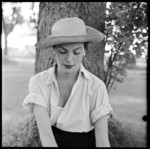Bob Dylan, Desolation Row, and A Rat in the Kitchen
Bob Dylan, head slightly cocked, stared at me from the wall of my Peace Corps home, a dirt and wattle hut in a remote Ethiopian village. Highway 61 Revisited flickered, hanging on a thread I’d snaked through the the album cover, glossy in the candlelight of my little house that had no electric, no water, and most of all, no record player.
“Stupid situation,” I imagined Dylan saying, an abrupt harmonica wail highlighting the “stupid”.
A friend had gifted me the then-new album while I packed for two years in the African back-country. “Stay in touch,” she said. “Lots is happening in America, too.” A few days later, I was in my village, two miles up on the high escarpment of southern Abyssinia. Just behind the town, mountains jutted skyward another 4,000 feet, catching fluffy clouds that drifted above thorny acacia trees and packs of shaggy-maned baboons on the long savanna that stretches from the Somali Sea 200 miles away.
Addis Ababa, the capital, was two days away – by horse for several hours to reach the last kilometer of all-weather road, there to catch a truck-taxi to the next town, and then onward in crowded market buses. After three months in the village, I made the trip, and discovered a small electronics shop in the Piazza, the bustling square that is a legacy of Mussolini’s invading armies. In the shop’s window, gray, plastic, compact, and Panasonic, was a battery-powered phonograph. Out of my pocket came a month of my meager Peace Corps pay, and into my pack went the record player.
“And you’ll need those,” the shopkeeper said. He pointed to a carton of long, fat D-cell batteries. “Lots and lots of those.”
Back in my village, I pushed six D-cells into the underside of the phonograph, took the album off the wall, and swung the arm gently down onto the vinyl. Electric Dylan exploded into my little living room. I played, replayed, and played again the hurtling images. And that was my music for two years. Especially, “Desolation Row.”
I had a funky chair with flat wooden arms, each wide enough to hold a candle, and two candles were just enough to read by. I’d brought Russian novels, thick books like The Idiot, to occupy my nights. I sat in my bare living room, slowly absorbing Dostoevsky and Tolstoy while Dylan sang from a shadowy tabletop, and the phonograph chewed through batteries. About 9 p.m. the rain began. All day the wall of mountains behind the village captured incoming clouds, and as the temperature on the high plains dropped after sunset, the clouds condensed and let loose. About 10-o-clock, the rat came in.
Rat slipped in through the kitchen floor boards, and I never found exactly where. There wasn’t much in the tiny kitchen – a prep table with a kerosene burner for cooking, a plain set of wooden shelves, and a three gallon bucket, my daily ration of river water. Also, a burlap sack with a hundred pounds of flour sat on the floor, leaned up against the far wall. Nightly in the dim candlelight, Rat scurried for the flour sack, Dylan pumping out of the phonograph, rain dropping in torrents outside my front door. And the discharged D-cells were piling up.
So each night before I settled in to read, I lined up eight or ten of the hefty batteries on the chair arms, behind the candles, and started my album so that its eleven-minute finale, “Desolation Row”, would engage about the time I expected Rat. As the guitar strummed into, “They’re selling postcards of the hanging,” I’d peer out into the dim kitchen, grip a battery, and wait to see Rat’s dark form inch up the tan burlap. And, most nights, by about, “The riot squads are restless, they need somewhere to go,” Rat would be there.
Fling. Thud. Fling. Fling. Thud, thud. I’d send the batteries hurtling across my living room into the kitchen, the projectiles thunking into the flour sack. I’d sing along as Dylan intoned “You’re in the wrong place, my friend, you’d better leave”. And if Rat was still there as Dylan leaned into “Get outta here if you don’t know”, I’d belt out that line, too.
I never hit Rat. He was slow and none too bright, a high altitude rat deprived of oxygen and lucky that my aim was abysmal. After a few thuds, he’d turn back down the sack and disappear into the kitchen gloom as Dylan raced on to the song’s end, “Don’t send me no more letters, no, not unless you send them from Desolation Row.”
Thus passed two years, serving humankind in the daytime, in a daft reality at night. Just before I left my village, I put the worn record back into its album cover and taped the sleeve shut. Then I rode far out into the savanna, to a lone tree far from any hamlet or farm. The tree, revered locally as Sheik Hussein’s Shrine, celebrated a mystical appearance there by Archangel Michael. A green row of spiky cacti was planted around the tree to protect it from grazing animals, and a small stone cairn rose on one side. I slipped between the cactus spines and leaned Highway 61 Revisited against the tree, Dylan, his head slightly cocked, staring back at my village. And then, I rode away.
I hope you’ve enjoyed this vignette about Bob Dylan’s times and travels in the early Sixties. There’s more adventure to be had in my full length novel A Lesion of Dissent, just a click away at either Amazon or Smashwords.
 <== Cover, Amazon.com Edition, click cover to buy
<== Cover, Amazon.com Edition, click cover to buy

Click to buy – “A Lesion of Dissent”, Smashwords Edition: “Annette Monclere at Cabaret Khartoum”,







 "A Lesion of Dissent" Karl Drobnic's Bold Novel of Exile
"A Lesion of Dissent" Karl Drobnic's Bold Novel of Exile Remembering Carla Grissmann
Remembering Carla Grissmann
To wile away time, some nights as I waited for Rat, I’d try to compose a better opening line for Desolation Row’s, “They’re selling post cards of the hanging.” Never came close. Anybody got something?
LikeLike